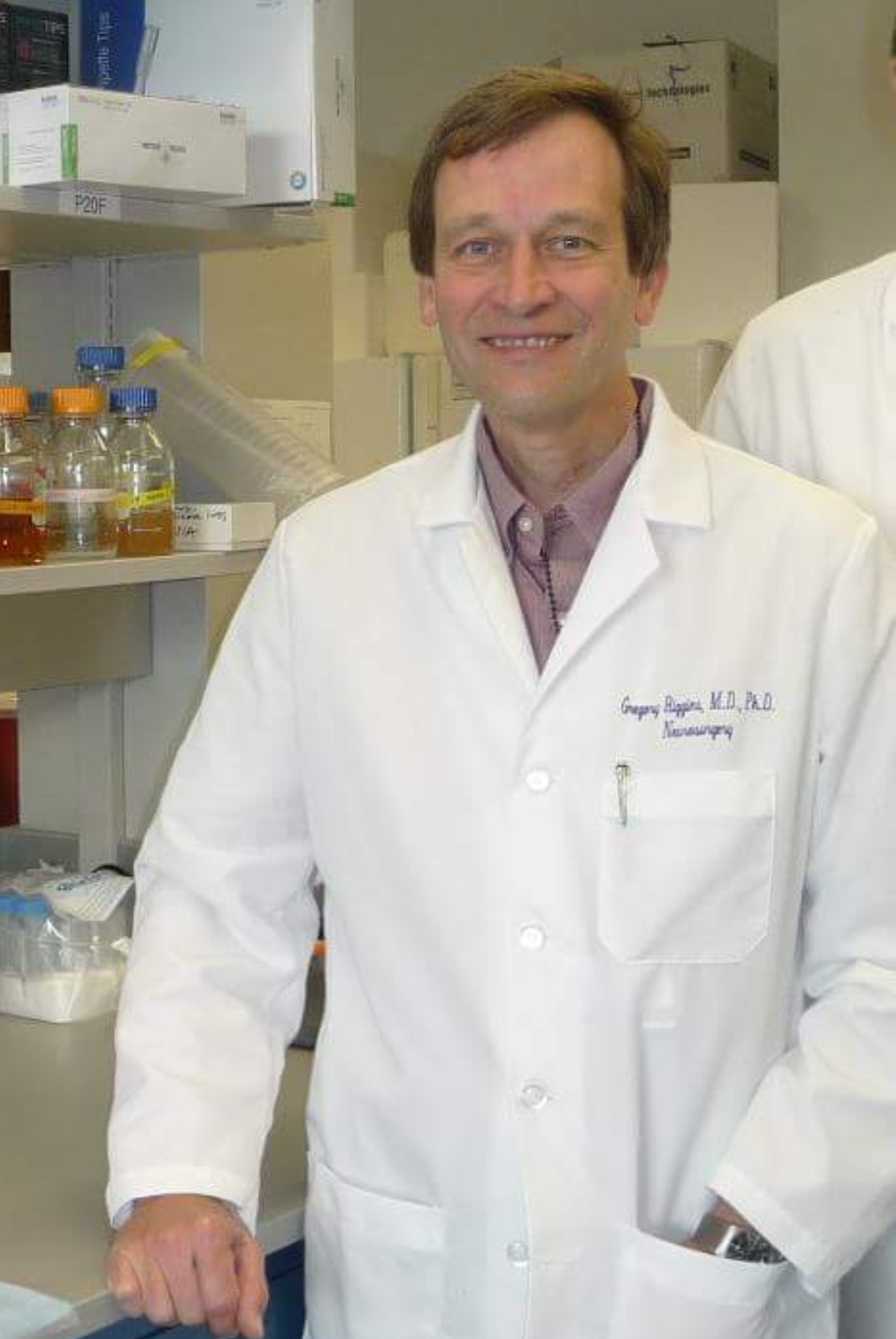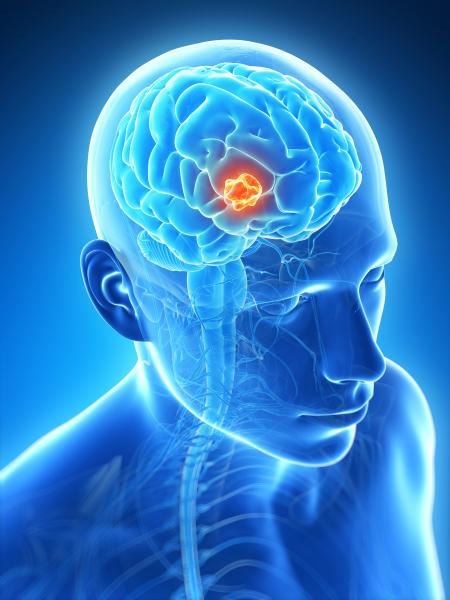Beau Biden, son of Vice President Joe Biden, died from brain cancer. As did Senator Edward “Ted” Kennedy. Brittany Maynard - suffering from a terminal type - became widely known for fighting for her right-to-die.
Aside from the occasional high profile cases and Hollywood movies, brain tumors rarely make center stage. And, when they do, it tends to be the most ominous story that gets told.
Fortunately, there is variability in diagnoses and early discovery can better your chances with certain forms. Benign (aka not cancerous) masses are common. As I have previously emphasized, however, location is crucial to many disease states. When it comes to the brain and tumors, prime real estate exerts tremendous influence on operability, survival, and impairments. So does type.
Hence, why a benign lesion tickling the brain stem can pose a greater challenge than a malignant one in an accessible spot.
That said, the CDC’s National Center for Health Statistics recently reported that brain cancer usurped leukemia as the most common cancer causing death in children and adolescents aged 1-19 years. Though the cancer death rate in this population declined 20% during the same period from 1999-2014, the statistical shift in brain cancer means there is more work to be done. (1)
This is not solely a disease of the young. Brain tumors can occur at all ages, in particular, these and other nervous system cancers are also most often found in people 55-64. The National Cancer Institute estimates there will be 23,770 new cases of brain and other nervous system cancers and 16,050 deaths in 2016. In 2013, there were 152,751 individuals living with these cancers in the United States. (2)
These growths can do harm by mass effect on vital locales. They can be malignant and aggressively expand. Deficits in language, personality, judgement and expression can happen from the tumor itself or attempts at removal. Or, they can be readily approachable and resected with minimal difficulty. It is a wide spectrum.
Believing I wanted to be a brain surgeon, I assisted in many of these cases as a medical student and when I began my first residency in neurosurgery. These experiences left a lasting impression. Glioblastoma Multiforme (GBM) has finger-like projections that plunge throughout the brain. As quickly as they were debulked, they regrew. Meningiomas, on the other hand, developed slowly often over a lifetime and, mainly, once taken out gave patients a liberating perspective. The stark contrast reflects the cruel reality of tumors in the brain.
To help elucidate fact from fiction, I enlisted Dr. Gregory Riggins, Professor of Neurosurgery and Oncology and Director of the Brain Cancer Biology and Therapy Research Laboratory at Johns Hopkins:
What are the most common brain tumors in kids?
Dr. Riggins: The most common benign brain tumors in children are low grade gliomas, such as the pilocytic astrocytoma. These can be cured by surgery, as long as it is an accessible location for the surgeon. The most common malignancy in children is medulloblastoma - overall, about 70% of children with this diagnosis survive five or more years. Most brain tumors of any kind present with some type of neurological symptom depending on location and local effect, or due to elevated pressure on the brain from the tumor growing within the confines of the skull. They can present with balance or gait disturbances, seizures and often with accompanying headaches.
What are the most common brain tumors in adults?
Dr. Riggins: In adults, the most common benign tumor is the meningioma with over 90% being benign. The most common brain cancer is glioblastoma multiforme. The current average survival for glioblastoma is in the 15 to 20 month range. This is the brain cancer that is suspected to have killed Senator Ted Kennedy, Tug McGraw and Beau Biden.
How accurate is Hollywood's depiction of patients with brain tumors? What do you believe are the greatest misperceptions?
Dr. Riggins: Hollywood likes to use a brain tumor diagnosis as a dramatic surrogate for a death sentence, as in the doctor says, “You only have 6 months to live.” There are over 120 different recognized pathological types of brain tumors. Many of these, the grade 1 tumors, for example grade 1 meningioma, can in the vast majority be removed by the surgeon, and not return. There are unfortunately some very tragic brain tumors, with glioblastoma being the most deadly.
What are the most aggressive forms in kids and adults?
Dr. Riggins: The most aggressive in both children and adults are glioblastomas which can occur at any age. In children, they are in particular very bad as they often occur in the brain stem within vital structures that control the heart or breathing.
Do cell phones cause brain tumors?
Dr. Riggins: The several studies on cell phones and the effect of electromagnetic fields they generate mostly show little or no effect. There doesn’t seem to be a great case for a strong association, but there is a possibility that some subsets of the population might be at a small elevated risk. It’s unlikely a significant risk, but using headphones or ear-buds, seems prudent and more comfortable for long cell phone calls.
What are known causes for brain tumors?
Dr. Riggins: The best evidence for an environmental cause of brain cancer is radiation. Atomic bomb survivors were the first to show an elevated brain cancer risk, but this also appears to be extending to medical radiation and meningioma, the most common benign brain tumor. There are also some hereditary causes of brain tumors, but they are very rare. Some inherited cancer causing mutation can come with an elevated risk of certain brain cancer, but most of the unfortunate effects individuals in these families present with are other types of cancers. For example, those inheriting a cancer causing mutation as part of genetic familial adenomatous polyposis (FAP) mostly get colon cancer, but also have an elevated risk of medulloblastoma.
What are the greatest discoveries in the field and what can be expected in the next 10 years?
Dr. Riggins: I think the biggest past accomplishment has been understanding the genetic basis of cancers, including brain cancer. We now know what genes and molecular changes that lead to brain cancer, so we can better understand how to approach treatment. Unfortunately, targeting the molecular changes hasn’t met with much success. I hope in the next ten years we can find better therapies that will result in more than incremental survival benefit for brain cancers. This might be from how better to utilize different biological based therapies, possibly in combination with improved drugs, and how to harness the immune system to combat the tumor effectively.
What are the greatest challenges to curing brain tumors? Especially most malignant types.
Dr. Riggins: The big difference between benign and malignant is that the malignant tumors have spread and infiltrated so much normal brain that despite the surgeon's best effort to remove all the malignant cells, they come back. Therefore, the big challenges for the malignant type are that surgery is not curative, nor is radiation or current chemotherapy. Most drugs don’t get into the brain or brain tumor very well and the concentrations necessary are too toxic to the patient. For radiation, the doses and the wide treatment area necessary to kill each last tumor cell would cause too much damage to the normal brain. The other challenge is that the cancers are very heterogeneous. There are lots of different pre-existing mutations in different populations of cells in the tumor, enough so that there is a pre-existing resistance mutation to nearly any drug you throw at it.
When should you be worried you have a brain tumor?
Dr. Riggins: If there are unusual neurological symptoms or seizures. Depending on your severity of symptoms, if your doctor or the emergency room physician is concerned, then he/she will order a CAT scan or an MRI.
#### To complete the series, go to Part II of Brain Tumors: Fact vs. Fiction ####
SOURCES:
- Centers for Disease Control & Prevention, National Center for Health Statistics: Declines in Cancer Death Rates Among Children and Adolescents in the United States, 1999-2014. Click here: http://www.cdc.gov/nchs/data/databriefs/db257.pdf
- NIH: National Cancer Institute: http://seer.cancer.gov/statfacts/html/brain.html
- Gregory Riggins, MD, PhD: http://www.hopkinsmedicine.org/neurology_neurosurgery/research/labs/brain-cancer-biology-lab/

Professor of Neurosurgery and Oncology at Johns Hopkins, Dr. Gregory Riggins directs the Brain Cancer Biology and Therapy Research Laboratory. The main goal of his research is to identify new anti-cancer therapies and to help launch new clinical trials.
Dr. Riggins is the inaugural recipient of the Irving J. Sherman, M.D. Research Professorship in Neurosurgery Research. He is director of the division of neurosurgery research.
His laboratory has identified new therapies for glioblastoma and medulloblastoma, and several of these therapies he has helped identify have advanced to new clinical trials.
He also has as a main focus of his work strategies for cancer prevention, and therapies affordable to underprivileged cancer patients, and for those individuals at a very high risk for cancer.
Dr. Riggins received his medical and Ph.D. degrees from Emory University, where he graduated from the Medical Scientist Training Program.
Dr. Riggins does not provide direct patient care and is not a surgeon, but he works full time on brain tumor research, teaching and new clinical trials.




